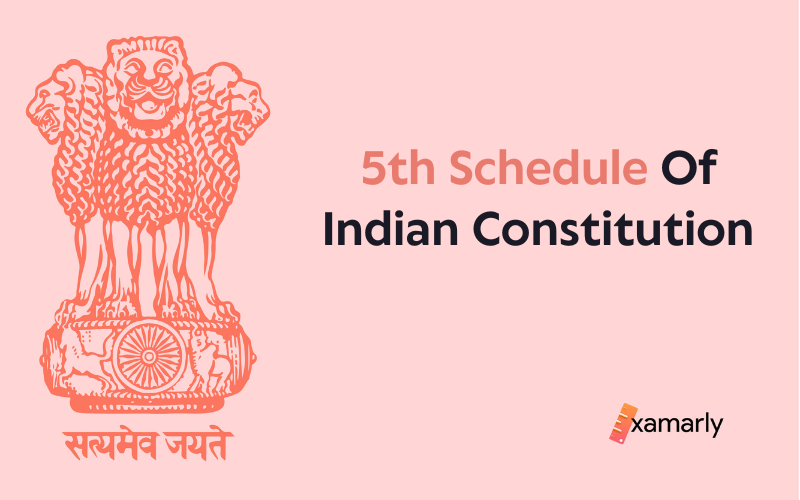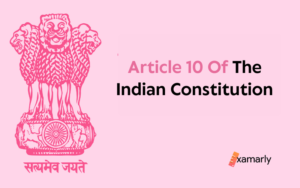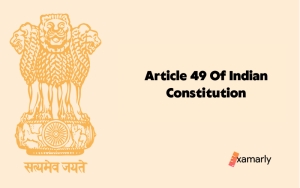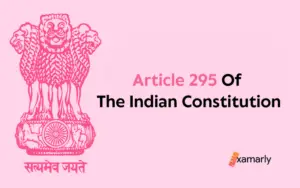The 5th schedule of Indian constitution defines Scheduled Areas and Tribal Advisory Councils. It also specifies how Scheduled Areas and Scheduled Tribes are administered and controlled in India. The 5th and 6th schedule of the Indian Constitution specifically deals with the governance of such scheduled or tribal population and areas.
In this article, we will look at the details of the fifth schedule. Along with the definition, we will look at who is empowered to declare an area a Scheduled Area and their role in Indian governance. It’s a must-read for anyone interested in Indian politics and tribal relations. Read on to learn more.
- 5th Schedule Of Indian Constitution
- Main Provisions
- What Are Scheduled Areas?
- Criteria For Declaring Schedule Areas
- States Having Fifth Schedule Areas
- Who Has The Authority To Declare A Region A Scheduled Area?
- Who Has Authority Over Scheduled Areas?
- What Is The Role Of Tribal Advisory Councils?
- Powers Of The Governor
- Concern Regarding Fifth Schedule Area
- Conclusion
- UPSC PYQs On Fifth Schedule Of Indian Constitution
5th Schedule Of Indian Constitution
The Indian constitution has provisions to protect tribal and scheduled areas. The Fifth Schedule of Indian constitution protects those areas. Schedules for Tribal Areas contain provisions on governance and self-government, as well as on devolution of power. They also guarantee the protection of tribal land rights and ensure that tribal traditions are upheld. As such, these provisions are crucial in integrating tribal areas into the Indian nation-state and legitimizing their status. The constitutional provisions also recognize the tribal communities as scheduled tribes and acknowledge their existence as distinct legal entities within the Indian union.
It specifically looks into the governance and control of Scheduled Areas and Scheduled Tribes in India. The 5th Schedule protects the interests of the tribal population in all scheduled areas except Assam, Meghalaya, Tripura, and Mizoram. With respect to the 5th Schedule, the governor of the state has special powers and responsibilities. Schedule 5 of Indian Constitution is concerned with Article 244(1). The current states with Fifth Schedule Areas are Chhattisgarh, Andhra Pradesh, Gujarat, Jharkhand, Himachal Pradesh, Madhya Pradesh, Odisha, Maharashtra, Telangana, and Rajasthan.
Main Provisions
Let us specifically look at what are the main provisions mentioned in Schedule 5 of Indian Constitution:
Part A
It includes the following general provisions:
- Paragraph 1 – Gives a clear explanation of the “state” which will be crucial to the understanding of this schedule
- Paragraph 2 – It describes Scheduled Areas. This provision makes it clear that the state’s power of “administration and control” extends to these areas. The courts have held that the power of ‘administration and control’ referred to in this clause is broad enough to include the exercise of all types of governmental power – executive, legislative, and judicial powers
- Paragraph 3 – It states that the Governor of the State is vested with enormous legislative powers, including the obligation to make an annual report to the President of India on the administration of the Scheduled Area. It also states that the Central Government’s Executive power will extend to giving directions to the State Government for the administration of these areas. Here, the executive power of the Central government extends to all subject matters, including those that fall within the domain of the State government, in Scheduled Areas.
Part B
It explains how Scheduled Areas and Scheduled Tribes are administered and controlled. The following is a list of the applicable provisions:
- Paragraph 4 – A Tribes Advisory Council of no more than twenty members, of which, as nearly as possible, three-fourths shall be the representatives of the Scheduled Tribes in the State’s Legislative Assembly, shall be established in each State with Scheduled Areas therein and, if the President so directs, also in any State with Scheduled Tribes but not Scheduled Areas within it:
The remaining seats in the Tribes Advisory Council must be filled by other Scheduled Tribe members if the number of Scheduled Tribe representatives in the State’s Legislative Assembly is less than the number of seats to be filled by such representatives.
The Tribes Advisory Council will have the responsibility of providing advice on any issues the Governor may submit to them regarding the welfare and progress of the Scheduled Tribes in the State. - Paragraph 5 – The Governor is empowered under paragraph 5 to direct, by public notification, that any particular Act of Parliament or of the State Legislature shall not apply to the Scheduled Area of that state, or shall apply with exceptions and modifications.
Part C
For the declaration of Scheduled Areas, provisions are provided.
- Paragraph 6 – Paragraph 6 defines the Scheduled Areas that the President may declare by Order, and provides that he may, by order, direct cessation of such area, increase or transfer of land, and rescind any order made.
Part D
Regarding the Amendment of the Schedule, it gives information.
- Paragraph 7 – According to paragraph 7, Parliament may amend, alter, or repeal provisions in the Fifth Schedule, but no such amendment will be construed as an amendment to the Constitution under Article 368.
What Are Scheduled Areas?
Scheduled Areas are areas under the Indian Constitution that are protected by the Union. These areas are mostly forests and are rich in minerals. Businessmen and the corporate sector lobby for these areas due to their potential. However, Scheduled Areas also affect the livelihood of schedule tribes and tribal communities. There are ten states that have Scheduled Areas under their jurisdiction.
The term “Scheduled Tribes” refers to tribes that have been designated as such by a Presidential Order under Article 342 of the Constitution. The term “Scheduled Areas” refers to areas designated as such by a Presidential Order under Section 6 (1) of the Fifth Schedule, which states: “In this Constitution, the expression ‘Scheduled Areas’ means such areas as the President may declare to be Scheduled Areas by order.” The constitutional design for the creation of Scheduled Areas is provided in paragraph 6, which makes it very clear that any change in the boundaries of a Scheduled Area, whether an increase, decrease, cessation, or declaration, is only permitted by an order of the President of India.
Criteria For Declaring Schedule Areas
The First Scheduled Areas and Scheduled Tribes Commission established the following criteria for declaring any area as a ‘Scheduled Area’ under the Fifth Schedule of Indian Constitution:
- Number of tribal population, which should not be less than 50%
- The space is compact yet a reasonable size
- Area’s underdeveloped state
- A significant disparity in the people’s economic standard when compared to neighbouring areas.
An essential additional condition has more recently been identified as a functional administrative unit, such as a block, district, or taluk.
States Having Fifth Schedule Areas
The Fifth Schedule designates tribal majority areas in ten peninsular Indian tribal minority states, including Andhra Pradesh, Telangana, Gujarat, Jharkhand, Chhattisgarh, Himachal Pradesh, Madhya Pradesh, Maharashtra, Odisha, and Rajasthan.
The 5th Schedule of Indian Constitution protects the interests of the tribal population in all scheduled areas except Assam, Mizoram Meghalaya, and Tripura. The states of Kerala, Jammu & Kashmir, Tamil Nadu, West Bengal, Karnataka, and Uttar Pradesh do not have tribal settlements listed in the 5th or 6th Schedules.
Who Has The Authority To Declare A Region A Scheduled Area?
Currently, the President of India has the power to declare an area as a Scheduled Area under the Indian Constitution. He has executive authority to modify the boundary of a scheduled area and can increase or decrease its size. The President also has the power to revoke the declaration of a scheduled area. The constitutional design for the creation of Scheduled Areas is provided in paragraph 6. The President is bound by the Centre’s Council of Ministers’ assistance and advice. Consultation with the Governor is required in certain situations, but the provision is quite clear that this power is located at the Centre, and then at the highest level.
Scheduled areas are defined as regions or districts that are not a part of any state. Typically, such areas are not part of a federal state. In addition, their boundaries are not governed by the State’s laws. The Scheduled Areas Act describes the rules for declaring Scheduled Areas and provides information on Schedule Amendment. According to the Constitution, a state may set up a tribal advisory council consisting of 20 members with at least three-fourths representing a Scheduled Tribe in the state. The governor of a state can also declare an area as a Scheduled Area by repealing regulations affecting the state.
Who Has Authority Over Scheduled Areas?
Article 339 of the constitution lays down the Union’s jurisdiction over these areas. It also specifies that a Governor has the right to dissolve a district. Both the State and the Centre share the administration. Here, the Governor of the State is mandated to submit a yearly report to the President on the management of these areas. That being said, the Centre advises the State on how to administer such territories.
In the Indian constitution, the president has the power and considerable autonomy to declare Scheduled Areas and alter their boundaries, subject to consultation with the Governor of the state. The President also has the right to revoke an order if there is any violation of the Scheduled Areas Act. A Scheduled Area is an area that is compact in size, has a functional administrative unit, and is economically backward.
What Is The Role Of Tribal Advisory Councils?
The Indian constitution provides for the formation of Tribal Advisory Councils, which are composed of three-fourths members from tribal areas. These councils have advisory powers, not legislative or executive powers. It is therefore appropriate to appoint members who have a sense of empathy for tribal people and have a history of elevating the status of tribals.
The Tribal Advisory Councils are a great way for tribal communities to make their voice heard in government. In fact, they have the power to influence the direction of policy in the government. A good example of this is the implementation of Indian constitutional provisions involving tribal allotment of land and development.
Powers Of The Governor
- Authority to make rules that will in turn help establish peaceful governance of any scheduled area in a State.
- Power to remove or alter any regulations related to the state’s scheduled regions. But, this can only be done after approval by the President.
- To impose restrictions on or set a ceiling on land transfers and to regulate land allotment by or among members of Scheduled Tribes.
- Discretionary power to regulate the conduct of people lending money to Scheduled Tribes members.
Concern Regarding Fifth Schedule Area
- The 5th Schedule of Indian Constitution fosters the well-being and growth of Scheduled Tribes, as well as the management of scheduled regions. In a state having scheduled areas, it grants the governor extraordinary executive authority. In reality, however, the extraordinary legislative and executive gubernatorial powers have only occasionally been employed, despite the suggestions of different entities.
- Since both the State Cabinet and the Tribal Advisory Council are chaired by the same individual, even if a decision made by the cabinet was not in the best interests of tribal people in designated areas, the Tribal Advisory Council would be powerless to overturn it.
- Concerns regarding environmental and livelihood: In India, the loss of land continues to be the principal factor robbing tribal people of their means of subsistence, way of life, and homes. The greatest amount of forest cover and mineral wealth can be found in scheduled regions.
- The corporate sector has been shown to exert pressure on the government of the state for advantageous decisions and high profits by utilizing the commercial potential of the scheduled regions. It has an effect on the ecology and way of life of indigenous groups. As a result of being unfairly targeted, the tribal communities have been uprooted from their homes and ways of life.
- Concerning PESA: It was believed that the Panchayats (Extension to Scheduled Areas) Act, 1996 was the right move to make in order to guarantee tribal care and accountability in the Fifth Schedule areas. It hasn’t, however, been applied correctly. Tribal groups have steadily lost their rights to self-government and access to the natural resources that were intended to be provided for them by the law.
Conclusion
The Fifth Schedule of Indian Constitution contains some very powerful and significant clauses that help in social justice and equal powers for governance of all communities in states and Union Territories of India. As a UPSC candidate and as a learner of Indian polity, law & justice, and education, it is essential that you know about this schedule.
To know more about the other schedules of the Indian Constitution, check out the corresponding linked article.
| 1st Schedule Of Indian Constitution |
| 2nd Schedule Of Indian Constitution |
| 7th Schedule Of Indian Constitution |
| 10th Schedule Of Indian Constitution |
UPSC PYQs On Fifth Schedule Of Indian Constitution
Question: The provisions in the Fifth Schedule and Sixth Schedule in the Constitution of India are made in order to [UPSC 2015]
(a) protect the interests of Scheduled Tribes
(b) determine the boundaries between States
(c) determine the powers, authority, and responsibilities of Panchayats
(d) protect the interests of all the border States
Ans a) Schedule 5 of Indian Constitution deals with the management and control of scheduled territories and scheduled tribes there.
The management of tribal territories in the States of Assam, Meghalaya, Tripura, and Mizoram is addressed under the Sixth Schedule to the Indian Constitution.






